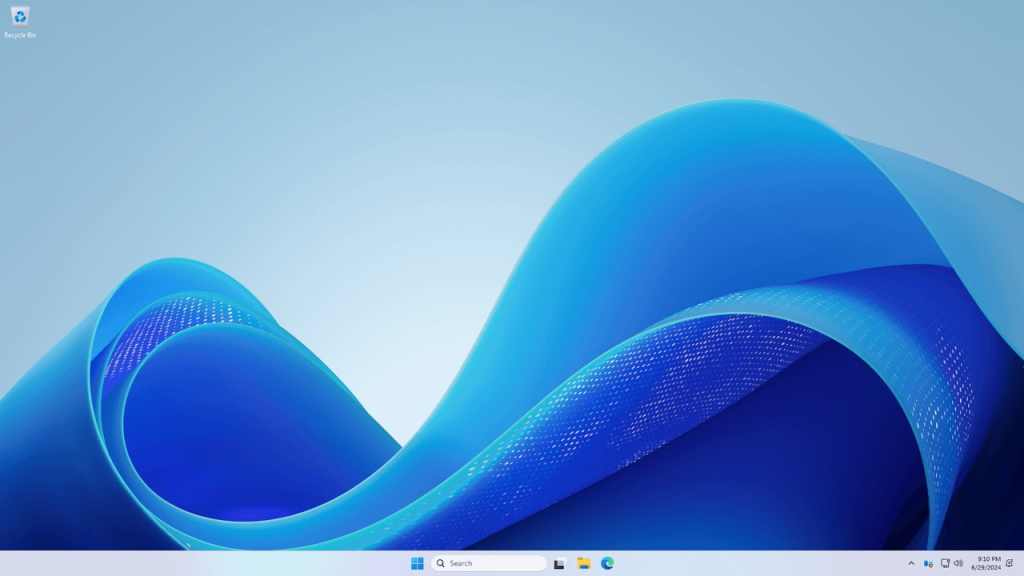Mastering Windows Server Licensing in 2025: Costs, Editions & Key Insights
In today’s complex IT landscape, understanding Windows Server licensing is not merely an administrative task—it’s a strategic necessity that directly impacts your organization’s budget, compliance posture, and technological capabilities. Microsoft’s licensing models have evolved significantly over the years, shifting from processor-based to core-based licensing and now introducing new virtual machine-centric options. This evolution reflects the changing nature of server infrastructure, particularly as businesses increasingly embrace virtualization and cloud technologies.
This guide is an update from our previous one in here and aims to demystify Windows Server licensing, providing you with the knowledge needed to make informed decisions that align with your organization’s technical requirements and financial constraints. Whether you’re planning a new deployment, considering an upgrade, or auditing your current Windows licensing position, understanding these fundamentals will help you optimize your investment in Microsoft’s server technologies.
Core-Based Licensing Fundamentals
Since Windows Server 2016, Microsoft has shifted from processor-based to core-based licensing, fundamentally changing how organizations budget for and deploy Windows Server. Under this model, licenses must be purchased for all physical cores in a server, ensuring that licensing costs are directly tied to computing power.
Each physical processor must be licensed for a minimum of eight cores, and each server must have at least 16 licensed cores, even if the actual core count is lower. Licenses are sold in packs of two, allowing businesses to scale licensing incrementally as needed. Additionally, all physical cores must be licensed, even if they are disabled in BIOS, unless they have been permanently deactivated by the hardware manufacturer.
This core-based licensing model applies to Standard and Datacenter editions but does not affect Windows Server Essentials, which remains licensed per server rather than per core. Given that licensing costs are now directly linked to hardware specifications, organizations must carefully factor Windows Server cost into their hardware purchasing decisions.
Windows Server Editions
Microsoft offers several editions of Windows Server, each tailored to different organizational needs and use cases. The three primary editions are Standard, Datacenter, and Essentials.
Standard Edition
Windows Server Standard Edition is designed for organizations with light or limited virtualization needs. Key characteristics include:
- Virtualization Rights: Each Standard Edition license (covering 16 cores) provides rights to run up to two virtual machines (VMs) or Hyper-V containers, in addition to the host environment.
- Features: Includes core Windows Server functionality but lacks some of the advanced features found in Datacenter Edition.
- Use Cases: Ideal for small to medium-sized businesses with minimal virtualization requirements or specific workloads that don’t demand extensive virtualization.
- Cost Considerations: Significantly less expensive than Datacenter Edition, making it cost-effective for environments with limited virtualization needs.
For organizations that need to run more than two virtual machines on a host, additional Standard Edition licenses can be “stacked” on the same server, with each additional license granting rights for two more VMs.
Datacenter Edition
Windows Server Datacenter Edition is the premium offering, designed for highly virtualized and cloud environments:
- Virtualization Rights: Provides rights to run unlimited virtual machines or Hyper-V containers on the licensed server.
- Advanced Features: Includes all features of Standard Edition plus additional capabilities such as Storage Spaces Direct, Storage Replica, Shielded Virtual Machines, and software-defined networking.
- When to Choose Datacenter: Generally becomes cost-effective when running 10 or more virtual machines on a single host.
- Cost-Benefit Analysis: While significantly more expensive than Standard Edition, the unlimited virtualization rights can help optimize Windows Server cost in highly virtualized environments.
The decision between Standard and Datacenter often comes down to the number of virtual machines you plan to run and whether you need the advanced software-defined datacenter features.
Essentials Edition
Windows Server Essentials is a specialized edition for small businesses:
- Target Audience: Designed specifically for small businesses with up to 25 users and 50 devices.
- Licensing Differences: Unlike Standard and Datacenter, Essentials is licensed per server rather than per core and does not require separate Client Access Licenses (CALs).
- Limitations: Restricted to a single physical server with up to two processors. It can be virtualized, but only if it is the sole VM running on a properly licensed Hyper-V host.
Essentials provides a simplified experience with pre-configured connectivity to cloud services, making it suitable for small organizations with limited IT resources.
Client Access Licenses (CALs)
In addition to server licenses, most Windows Server deployments require Client Access Licenses (CALs) for users or devices accessing the server. This is a crucial aspect of licensing that is often overlooked in initial planning.
There are two types of CALs:
- User CALs: License an individual user to access Windows Server from any device. Ideal for environments where users access the server from multiple devices or where the number of users is less than the number of devices.
- Device CALs: License a specific device to access Windows Server, regardless of how many users use that device. Cost-effective in scenarios where multiple users share devices or where there are fewer devices than users.
Organizations must choose either User or Device CALs for their entire Windows Server deployment—mixing the two types is not permitted without specific agreements. However, you can transition from one CAL type to another when renewing Software Assurance.
Certain scenarios are exempt from CAL requirements:
- Access from the internet by unauthenticated users
- Access for administration of the licensed server (up to 2 remote users only)
- Dedicated server-to-server communication
Remote Desktop Services (RDS) requires separate RDS CALs, which are not included with standard User or Device CALs.
For organizations using Microsoft 365, it’s important to note that Microsoft 365 licenses do not include Windows Server CALs—these must be purchased separately unless covered by specific Enterprise Agreements.
New Per-VM Licensing Model
To support evolving deployment patterns, Microsoft introduced a per-VM licensing model for Windows Server, which is available to customers with Software Assurance or subscription-based licenses. Unlike traditional core-based licensing, this model licenses virtual machines individually based on the number of virtual cores assigned, rather than the physical cores of the host server.
Per-VM licensing is only available to customers with active Software Assurance or through subscription programs like Azure. Each virtual machine must be licensed for at least eight virtual cores, with a minimum of 16 cores licensed across the entire environment.
This model is particularly useful in environments with a small number of large VMs or cloud deployments where physical infrastructure is abstracted. However, it is primarily intended for Azure and Service Provider environments rather than traditional on-premises deployments. Organizations considering this model should compare its costs and flexibility against standard core-based licensing to determine the best approach for their infrastructure.
Licensing in Virtualized Environments
Virtualization introduces several complexities to Windows Server licensing that organizations must navigate carefully.
High Availability (HA) Considerations
High availability configurations require careful licensing to ensure VMs can fail over between hosts without compliance issues. With Standard Edition, each virtual machine must be licensed on every potential host where it might run. For example, in a two-node cluster where VMs can move between servers, both servers must be fully licensed for all VMs. This can significantly increase licensing costs in HA environments.
Datacenter Edition simplifies HA licensing by allowing unlimited VMs on a licensed host. Since each server is fully covered regardless of the number of VMs, Datacenter Edition is often the better choice for clustered environments with frequent failover scenarios.
VM Mobility Limitations
License mobility, which governs how frequently VMs can move between physical hosts, has strict limitations. Without Software Assurance, a VM can only be reassigned to a different licensed server once every 90 days, restricting dynamic workload balancing across multiple hosts. This limitation can be a challenge for organizations that frequently redistribute workloads for performance or maintenance reasons.
With Software Assurance, VM mobility is significantly more flexible. VMs can be moved as needed within a licensed server farm without waiting periods, making it an essential consideration for businesses running dynamic or cloud-like infrastructures.
License Mobility Across Server Farms
Organizations operating multiple datacenters or hybrid cloud environments must account for license mobility across server farms. With Software Assurance, licenses can be reassigned between servers in different locations, including certain authorized cloud providers, allowing greater flexibility for disaster recovery and hybrid workloads.
Without Software Assurance, licenses are tied to specific physical hardware, preventing them from being moved between on-premises datacenters or cloud environments. This limitation can create challenges when planning for redundancy or migrating workloads between locations. For businesses with disaster recovery requirements, ensuring license mobility is a key factor in long-term infrastructure planning.
Software Assurance Benefits
Software Assurance (SA) provides several advantages beyond version upgrades that can significantly impact licensing Windows, deployment options, and total cost of ownership.
Key Advantages for Windows Server Licensing
Software Assurance offers additional benefits beyond standard licensing, providing flexibility and cost savings for organizations with evolving infrastructure needs. These advantages include:
- Access to new versions released during the coverage period
- Enhanced license mobility between servers and certain cloud environments
- Disaster recovery rights without additional licensing costs
- Eligibility for the per-VM licensing model
Software Assurance also provides cost savings in Azure through Azure Hybrid Benefit, which can reduce licensing costs depending on the specific Azure subscription and workload.
Windows Server 2025 Licensing Changes

As Microsoft prepares to release Windows Server 2025, several licensing changes are anticipated that will impact both new deployments and upgrade strategies. Organizations planning to adopt the latest version must carefully assess how these changes will affect their licensing costs, infrastructure compatibility, and overall IT strategy.
New Features and Licensing Implications
Windows Server 2025 is expected to introduce a range of enhancements, including improved hybrid cloud integration, advanced security features, expanded container support, and enhanced management capabilities. These additions may come with new licensing requirements or be restricted to specific editions, making it essential for organizations to evaluate which edition best aligns with their needs. Businesses relying on features exclusive to certain editions may need to reassess their licensing structure to ensure they remain compliant while maximizing the benefits of the new version.
Transition Considerations from Previous Versions
Organizations using older versions of Windows Server should carefully plan their upgrade path. Windows Server 2012 and 2012 R2 reached the end of support in October 2023, making it critical for businesses still relying on these versions to transition to a supported release. Compatibility with existing applications is another key factor, as software designed for older versions may require updates or modifications to function properly on Windows Server 2025. Additionally, hardware requirements for the new version should be reviewed to determine whether a server refresh is necessary. Organizations must also consider licensing conversion options, especially if they are transitioning from an older licensing model to a core-based or per-VM approach. Planning ahead will help mitigate potential disruptions while ensuring a smooth transition to Windows Server 2025.
Final Words
Windows Server licensing represents a significant investment that requires strategic understanding of Microsoft’s licensing models. Core-based licensing demands careful hardware planning, while the choice between Standard and Datacenter editions should be driven by virtualization needs. CALs, Software Assurance benefits, and the per-VM model present opportunities for cost optimization when properly aligned with your environment.
| Edition | Licensing Model | Virtualization Rights | CALs Required | Advanced Features | Ideal Use Case |
|---|---|---|---|---|---|
| Standard | Core-based (Minimum 16 cores/server) |
2 VMs per license (can stack) |
Yes (User or Device CALs) | ✔ Basic Windows Server ✘ No advanced SDDC features |
SMBs with limited virtualization |
| Datacenter | Core-based (Minimum 16 cores/server) |
Unlimited VMs & containers | Yes (User or Device CALs) | ✔ Storage Spaces Direct, Shielded VMs, Storage Replica, SDN |
Highly virtualized or clustered environments |
| Essentials | Per server (No CALs required) |
1 VM or 1 physical install | No | ✘ No advanced features ✔ Cloud integration |
Small businesses (up to 25 users / 50 devices) |
| Azure-based / Per-VM | Per virtual core (SA or subscription required) |
Per-VM licensing (min. 8 vCPUs/VM) |
Yes (based on access) | Depends on edition used | Azure, hosters, or large isolated VMs |
| Windows Server 2025* | Core-based & Per-VM (Hybrid) | Depends on license type | Yes | ✔ Enhanced hybrid, containers, security | Modern hybrid/cloud-focused infrastructure |
*Based on publicly available early information and preview builds as of 2025.
Upgrade Your Windows Server with HostStage
Windows Server licensing is just one part of a reliable infrastructure—choosing the right hosting is just as crucial. HostStage offers powerful Windows VPS hosting, fully optimized for both Standard and Datacenter editions, ensuring seamless performance and compliance.
For demanding workloads, the Windows VPS Leopard plan delivers 8 vCPU cores, 8 GB RAM, and NVMe storage, with full administrator access and flexible licensing. Backed by 24/7 expert support, HostStage provides the power and reliability your Windows Server needs.
Get started today with HostStage for top-tier performance and control.




